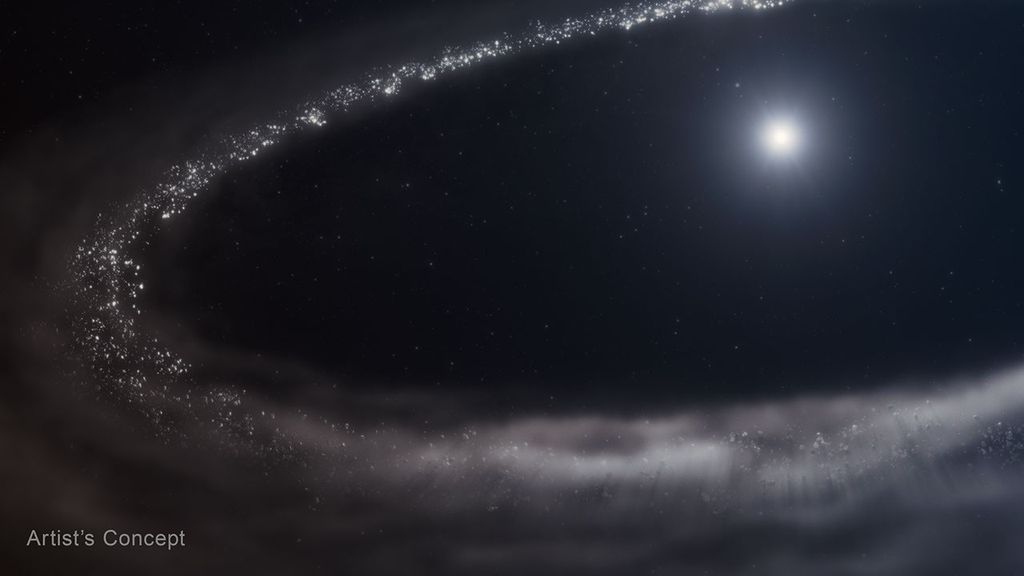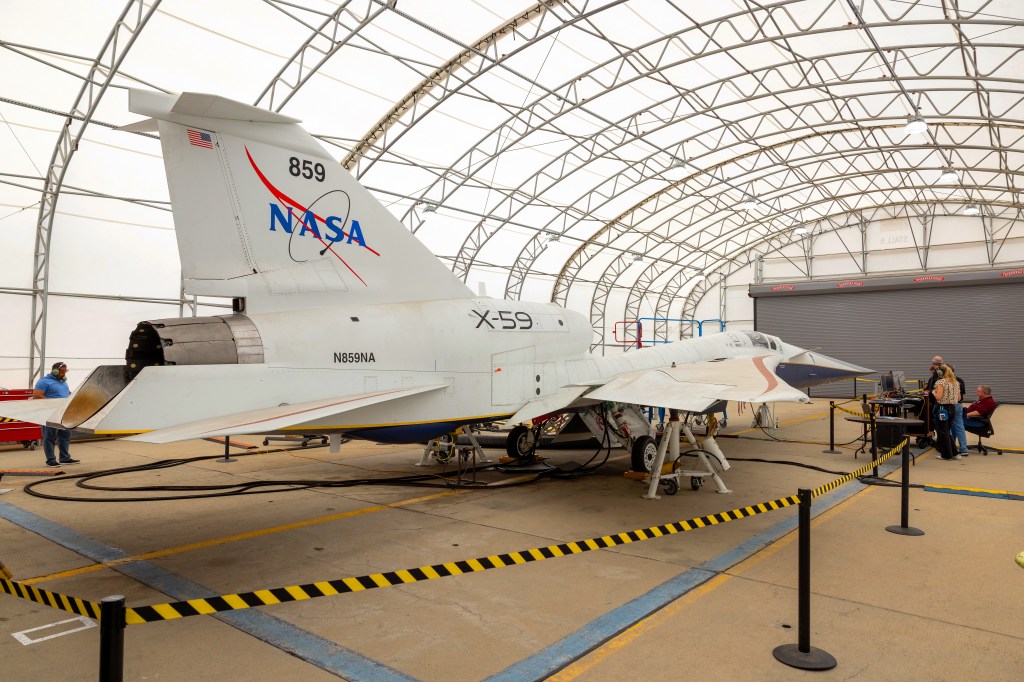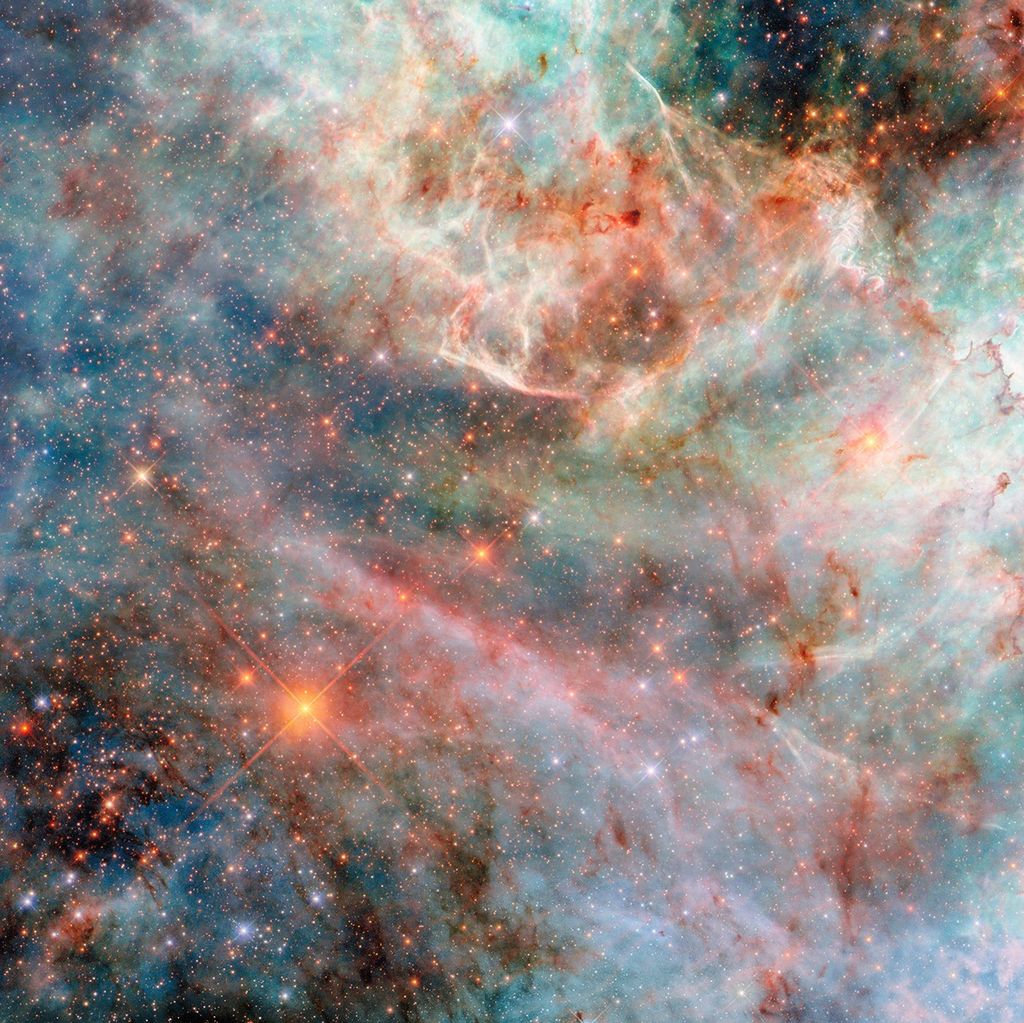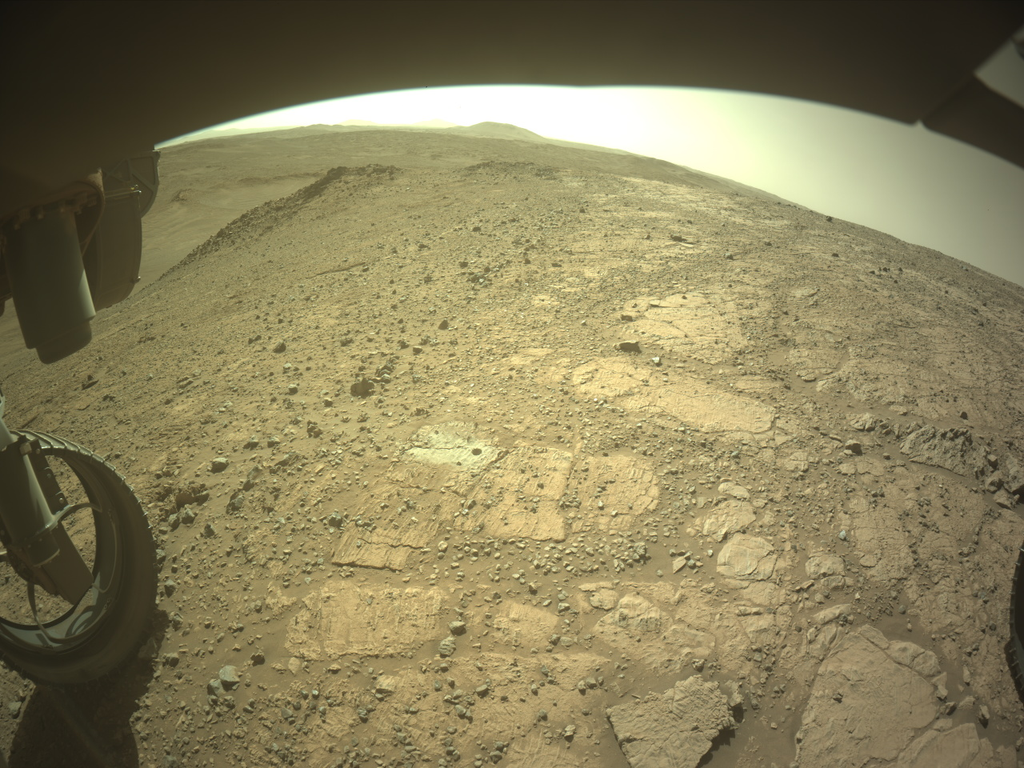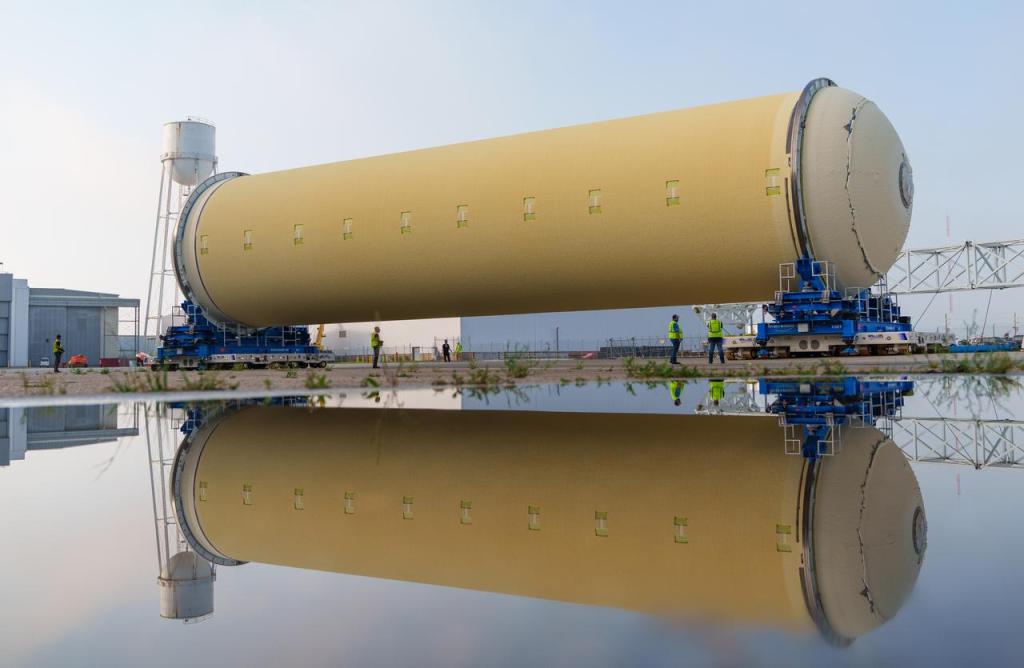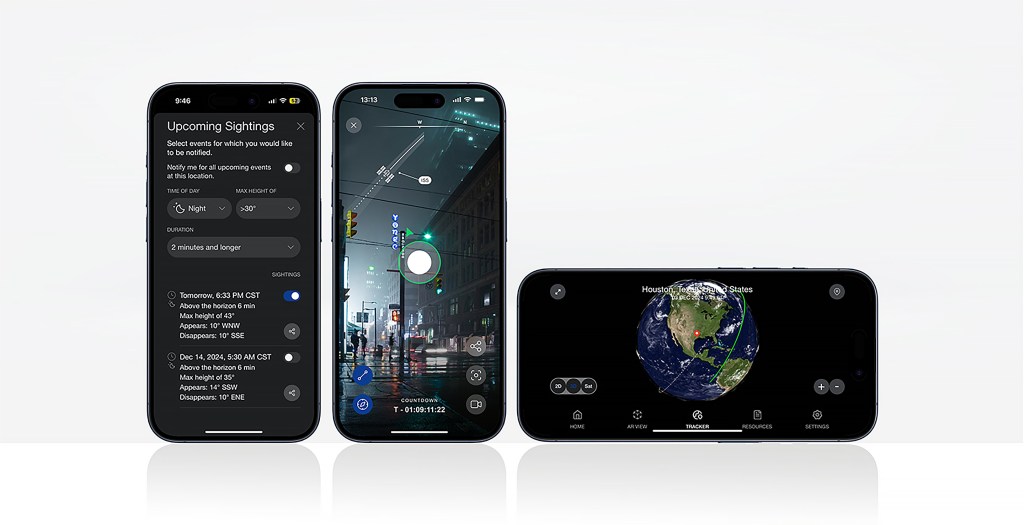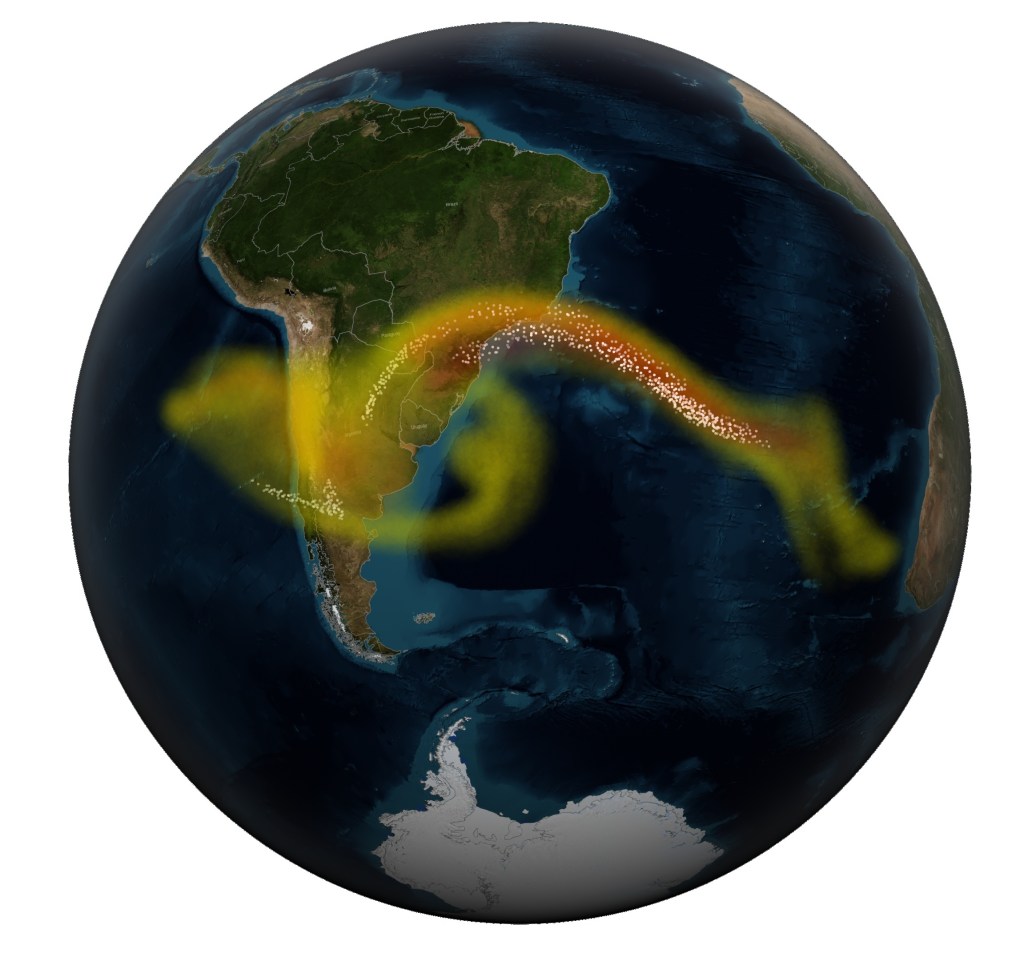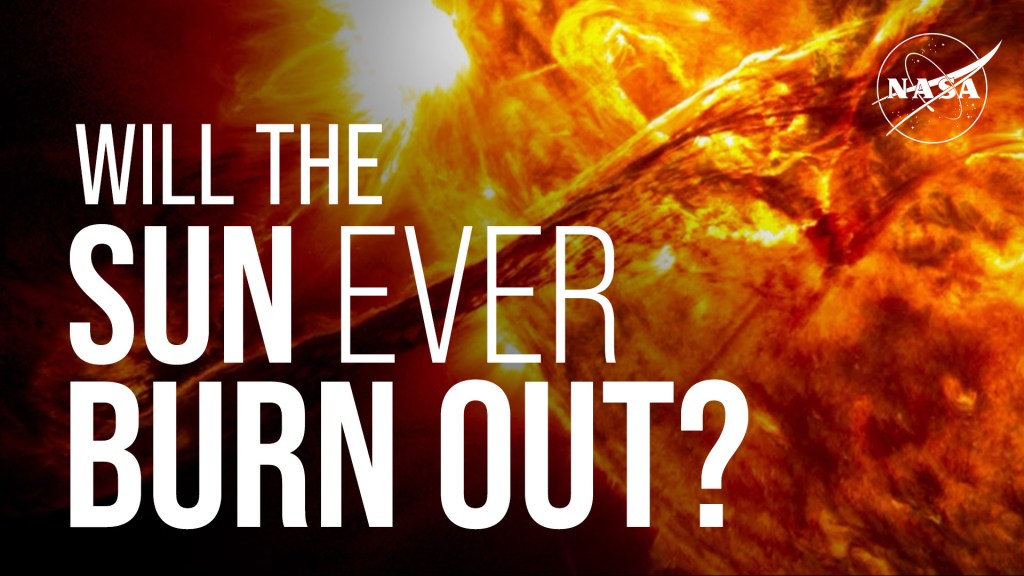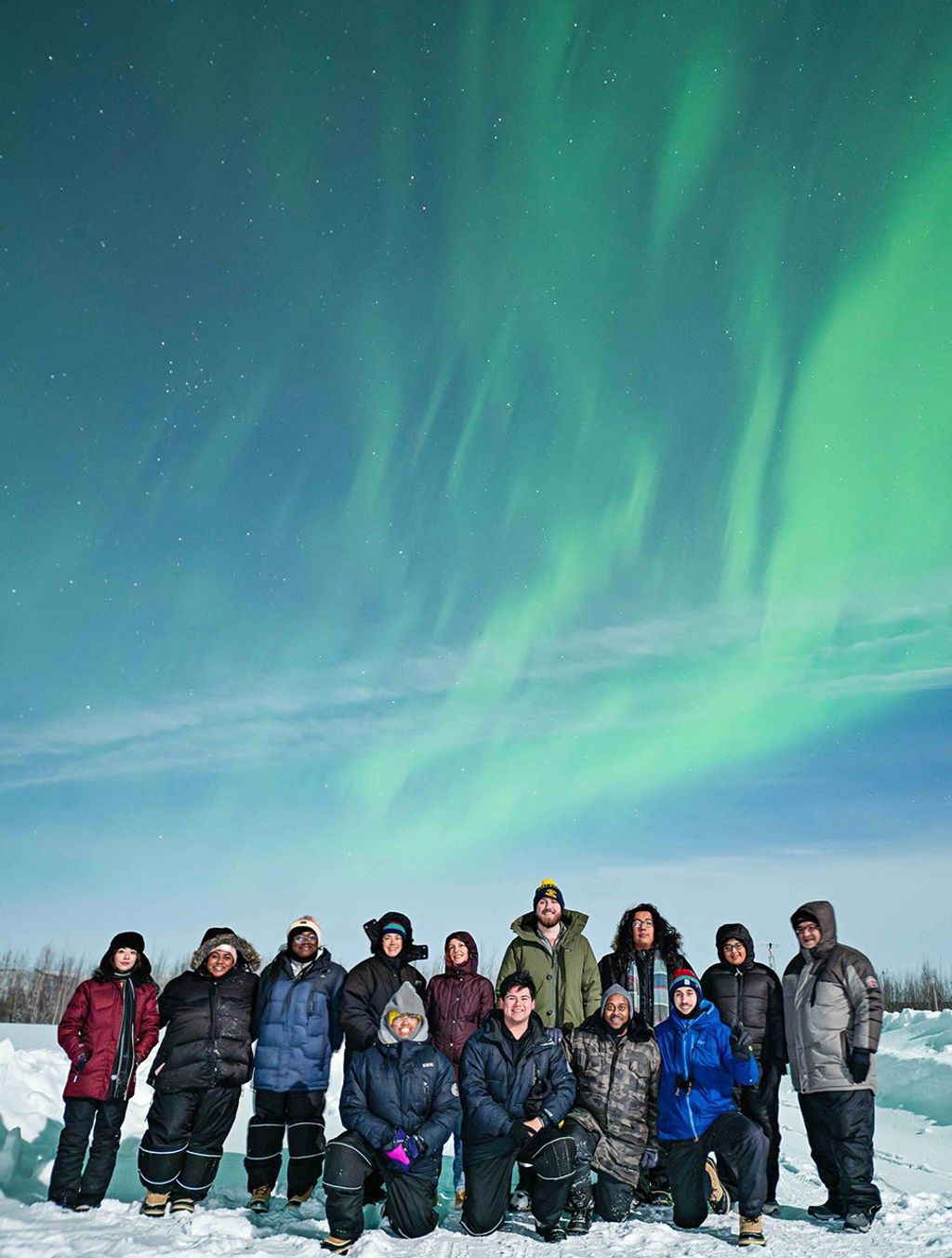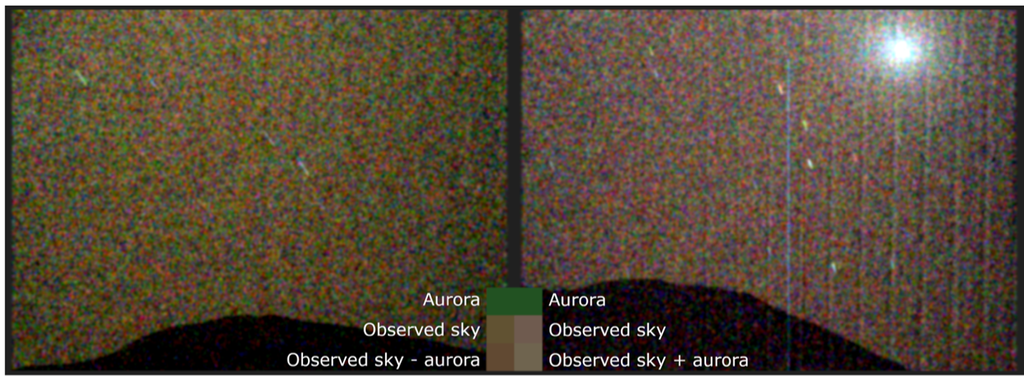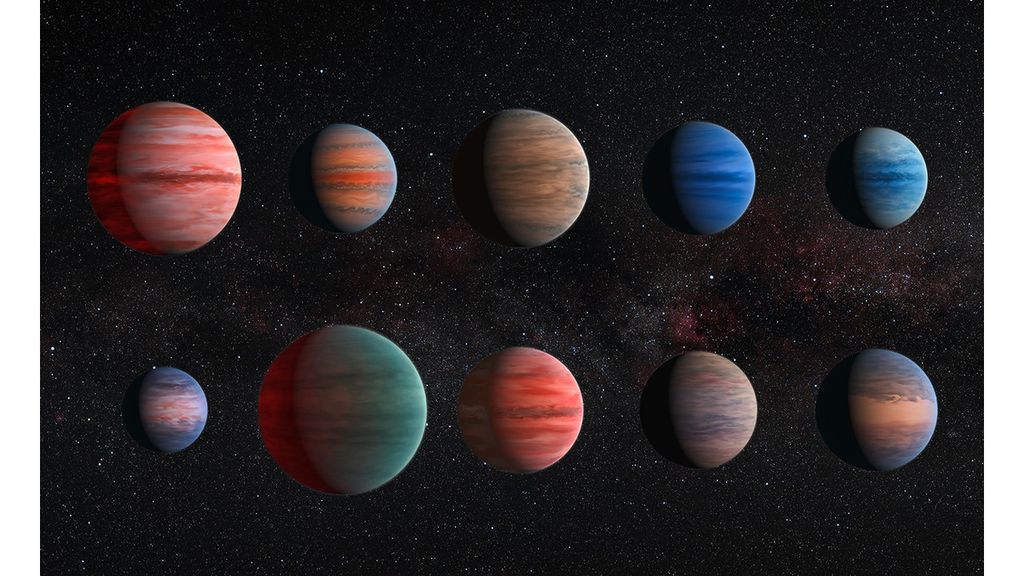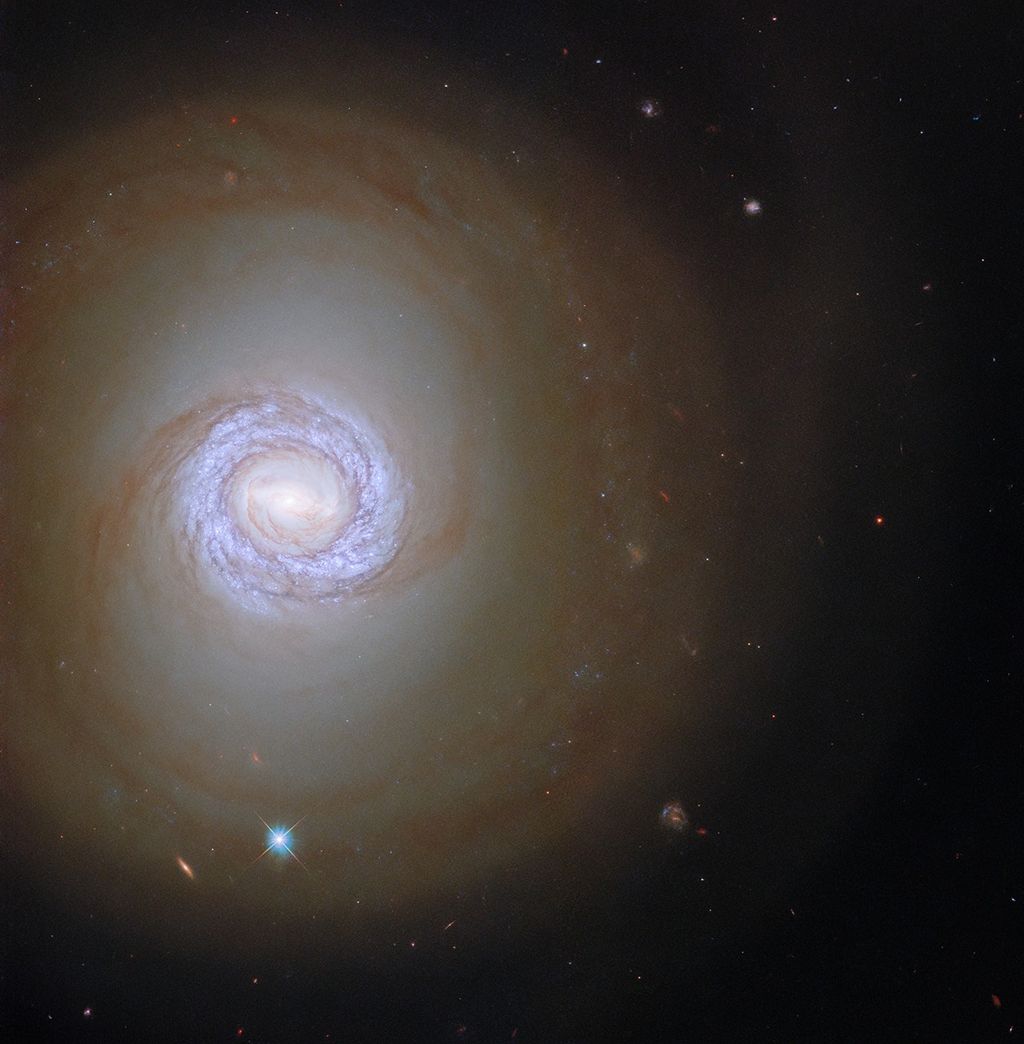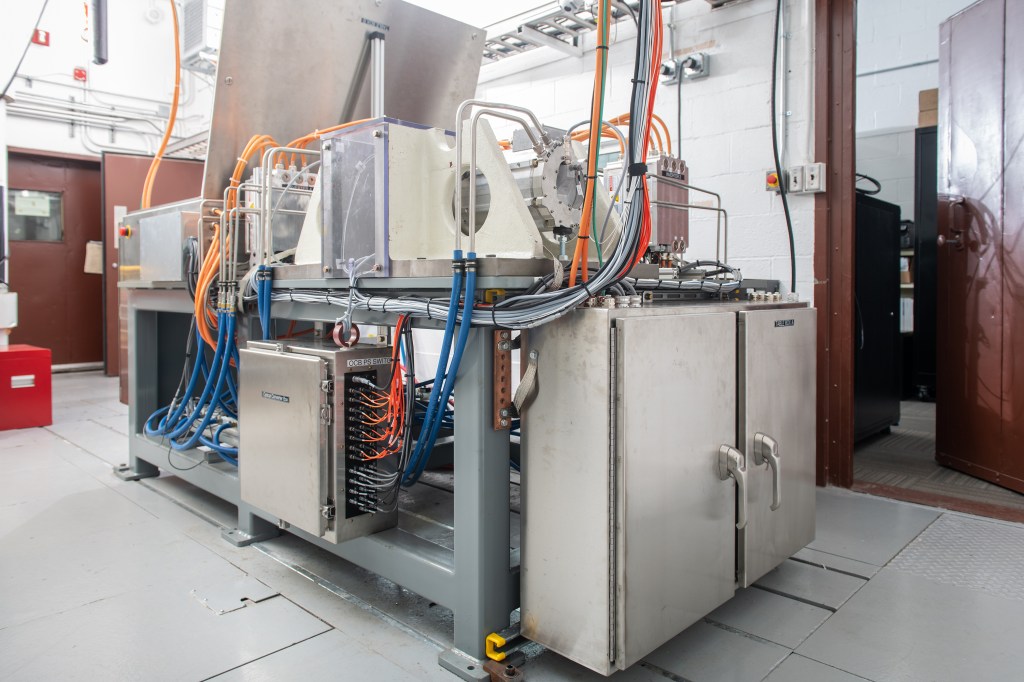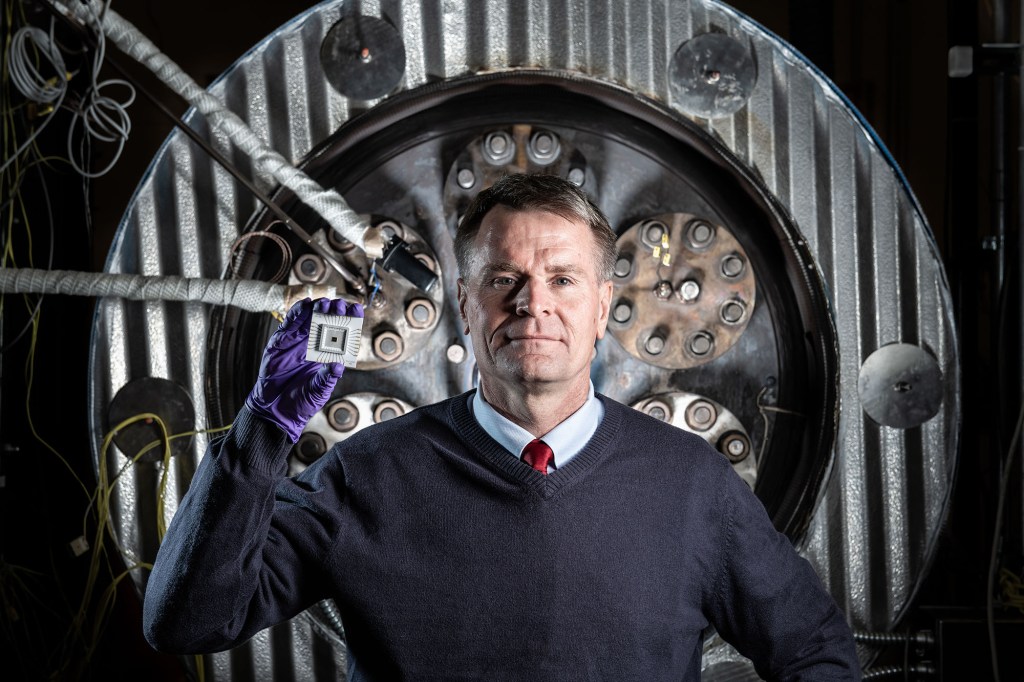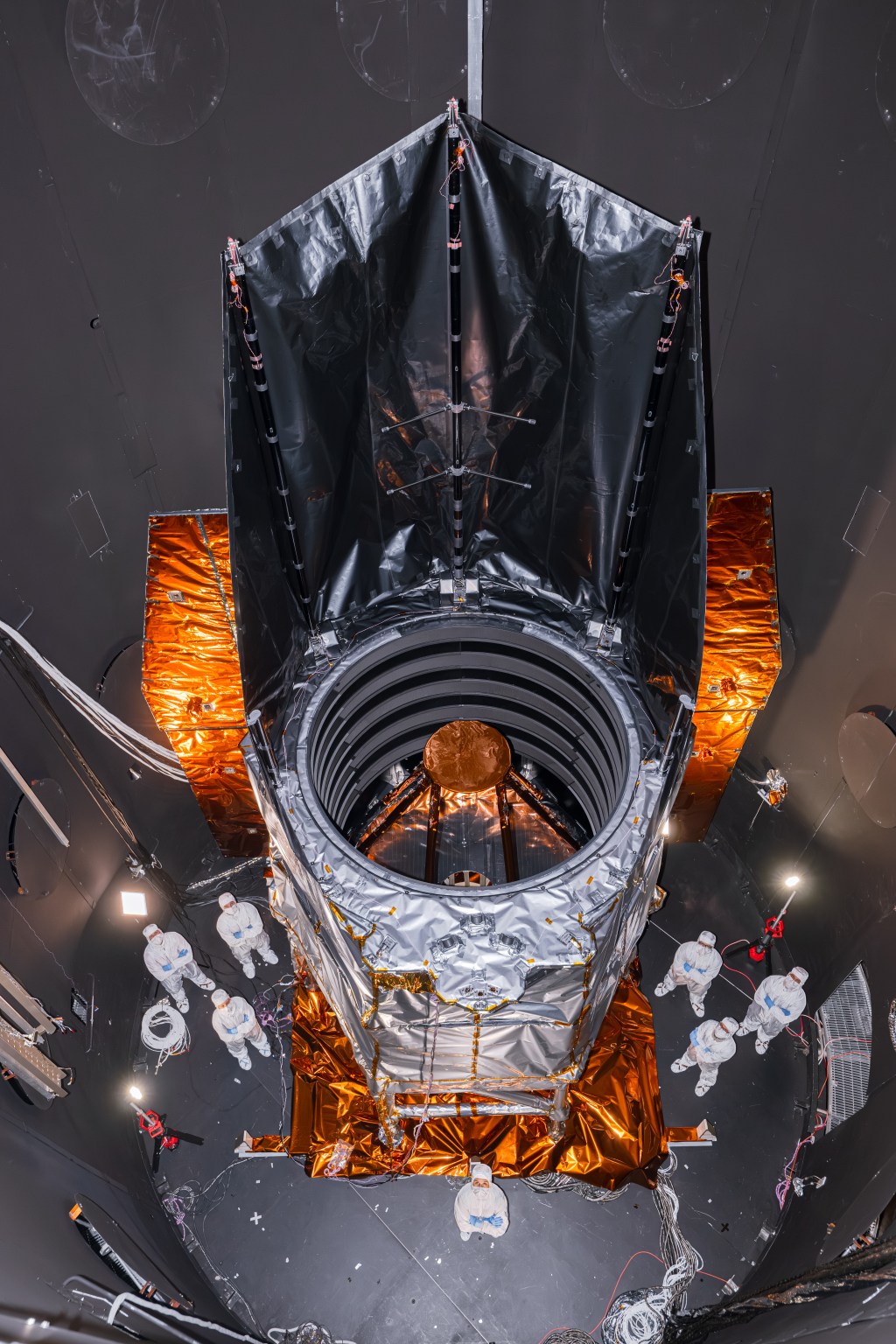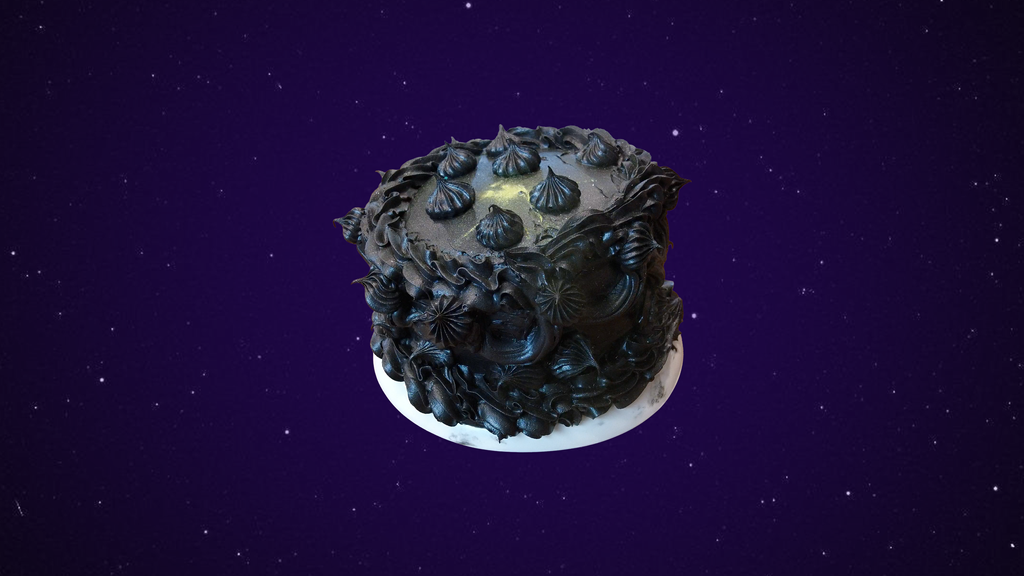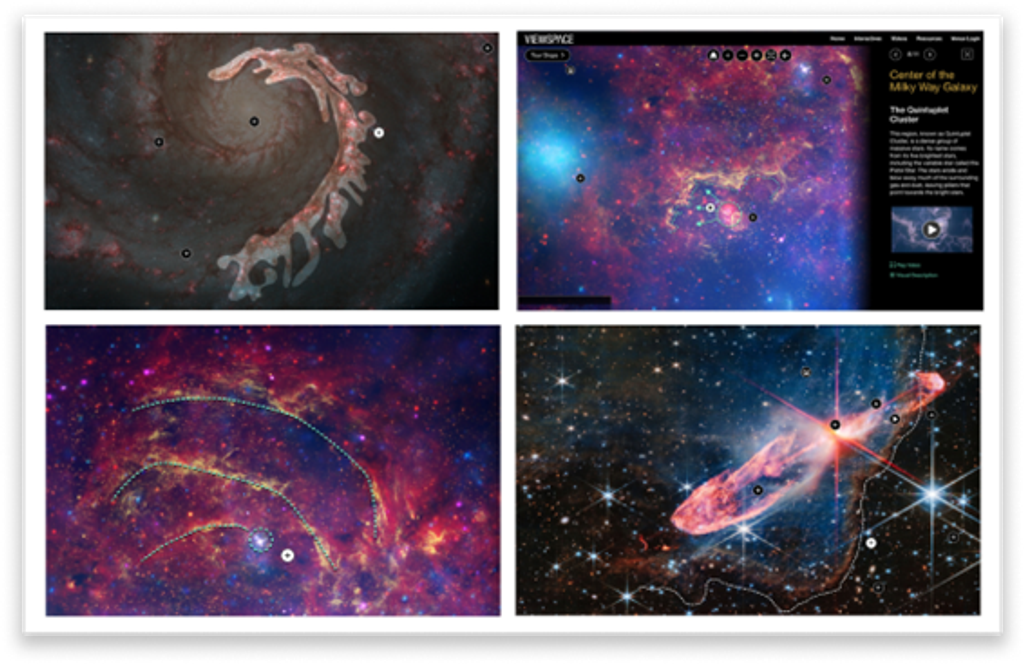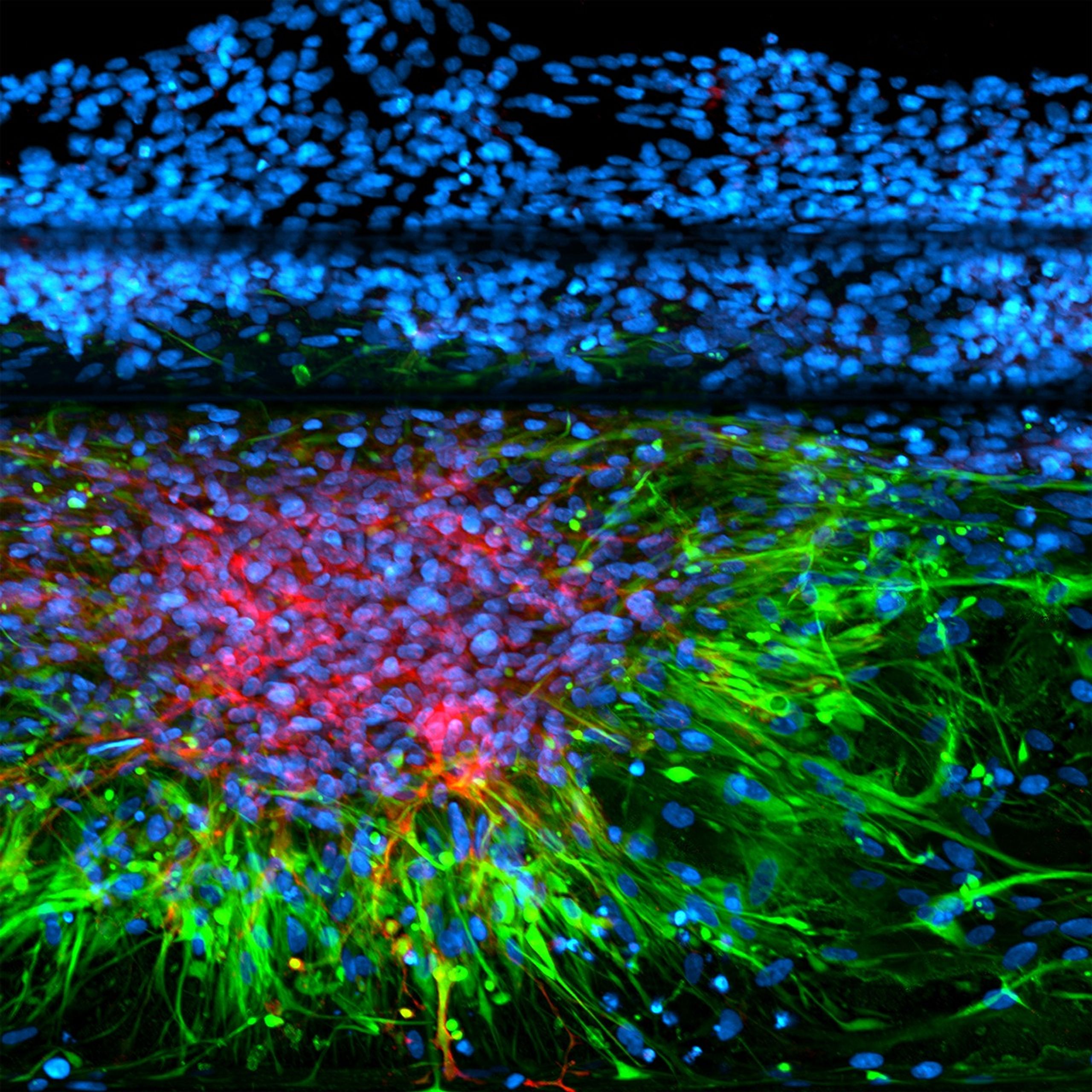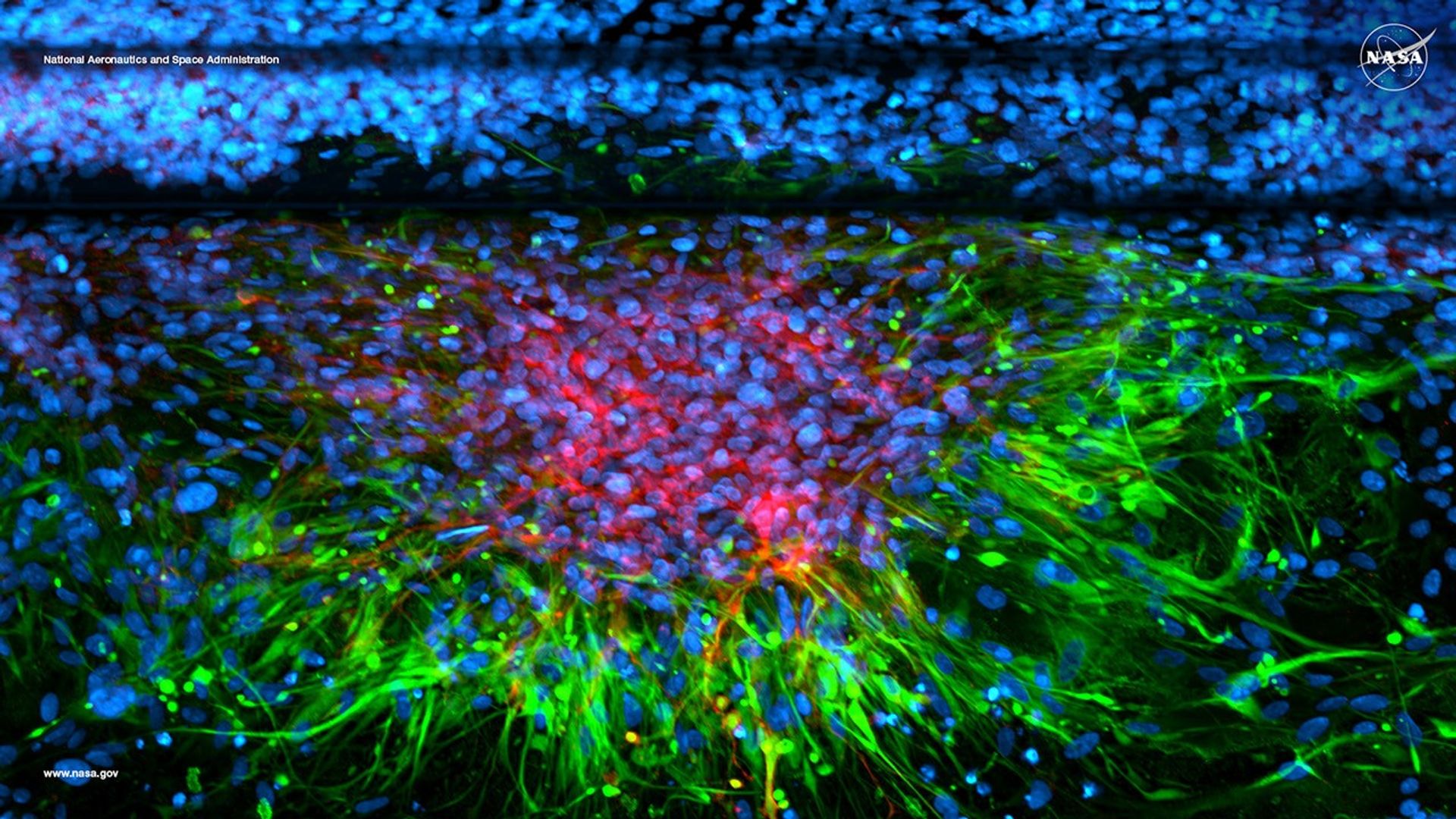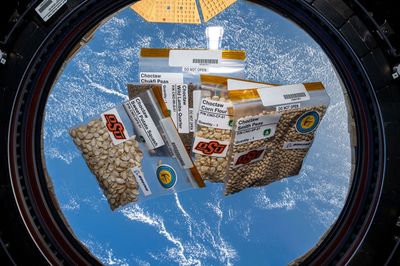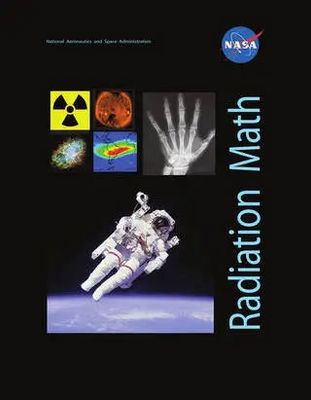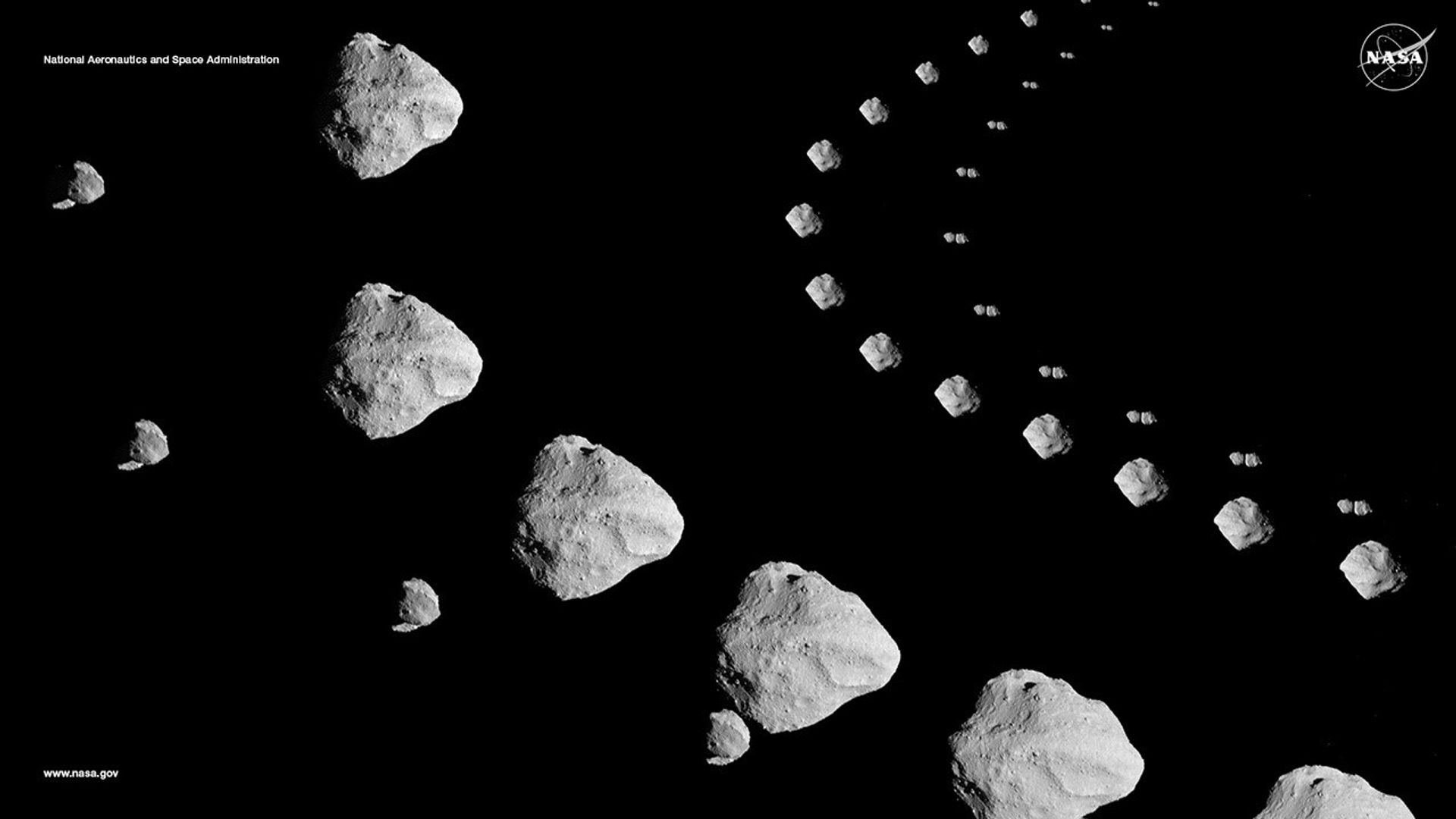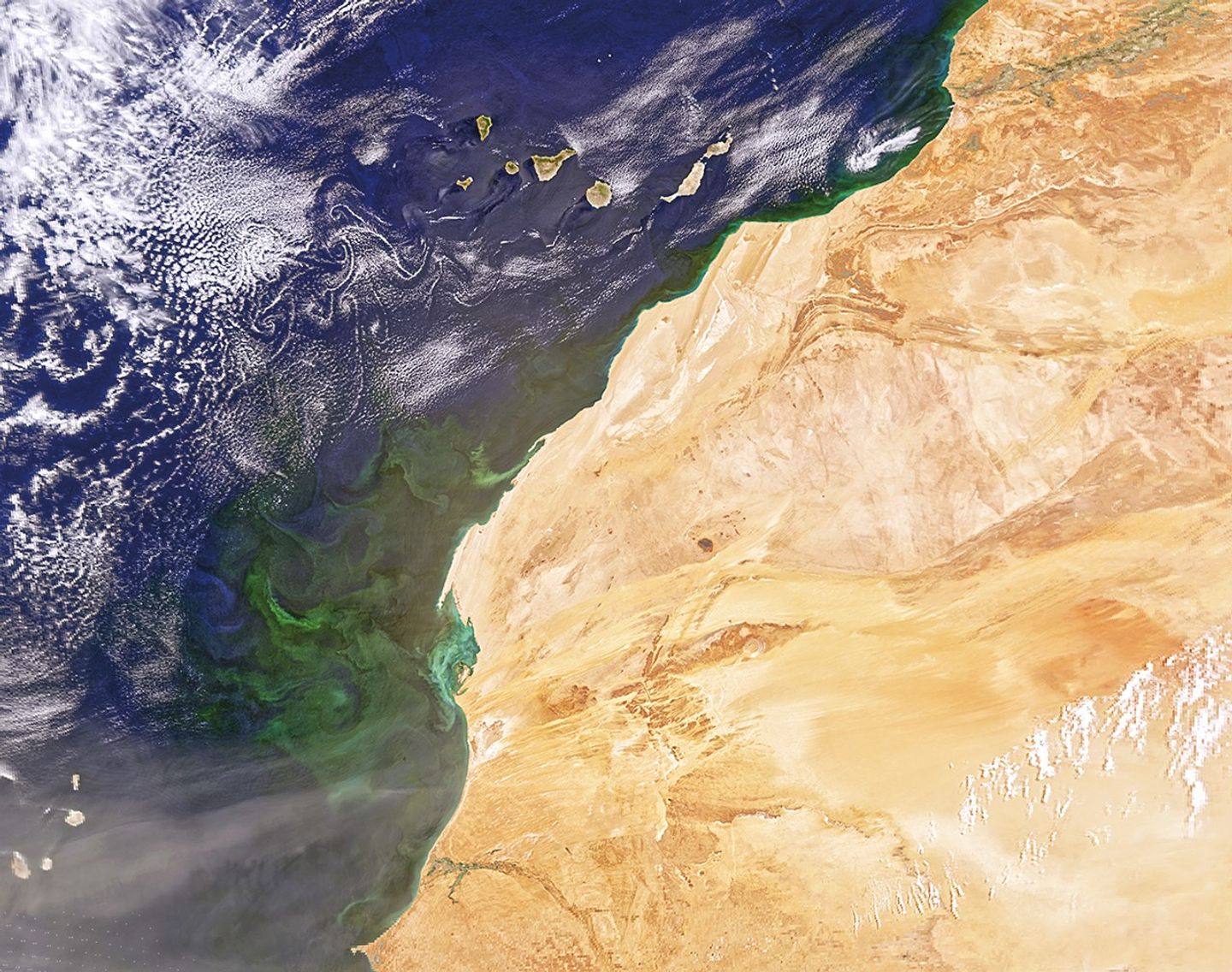Explore with us
March 2025 Image
Learn about March's amazing image. Explore related topics, activities, games, and download desktop wallpaper.
Studying Biological Impacts of Space Radiation
-
As NASA prepares to return to the Moon, it is important to study the impacts of space radiation and other spaceflight hazards on the human body. To do that, researchers developed human brain models in the lab and exposed them to simulated space radiation. This image captures a variety of cells around blood vessels and shows how astrocytes, which regulate multiple aspects of brain health, respond to radiation. Astrocytes gather to form a pattern similar to a scar (green) and express a protein that controls the permeability of blood vessels (red). Cell nuclei appear in blue. Studying how space radiation affects cells and organ models, including the brain, enables scientists to better understand the risks to astronaut health and develop countermeasures to protect crew on long-duration space journeys.
 Image and text credit: Estrella Passerat de la Chapelle, Blue Marble Space Institute of Science, and Egle Cekanaviciute, NASA’s Ames Research Center
Image and text credit: Estrella Passerat de la Chapelle, Blue Marble Space Institute of Science, and Egle Cekanaviciute, NASA’s Ames Research Center
Discover More about Space Radiation
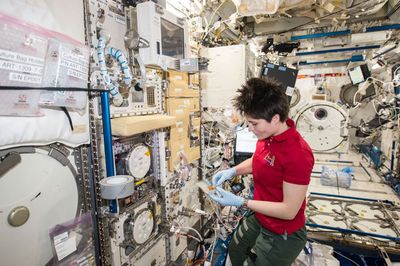
Epigenetics Research in Space
A growing body of research suggests a link between epigenetic mechanisms and a wide variety of illnesses and behaviors, including cancer, cardiovascular and autoimmune illnesses, and cognitive dysfunction. Epigenetics also plays a role in the changes humans and other living things experience in space.
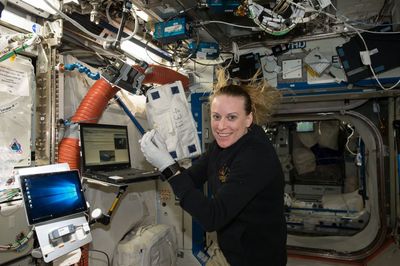
Station Science 101: Studying DNA in Space
Long-term space exploration exposes humans to radiation that can damage deoxyribonucleic acid or DNA, which carries the genetic information for our development and functioning. Conditions in space also affect the way the body repairs such damage, potentially compounding the risk. Research on the International Space Station studies DNA damage and repair using tools and techniques to sequence, analyze, and even edit DNA.
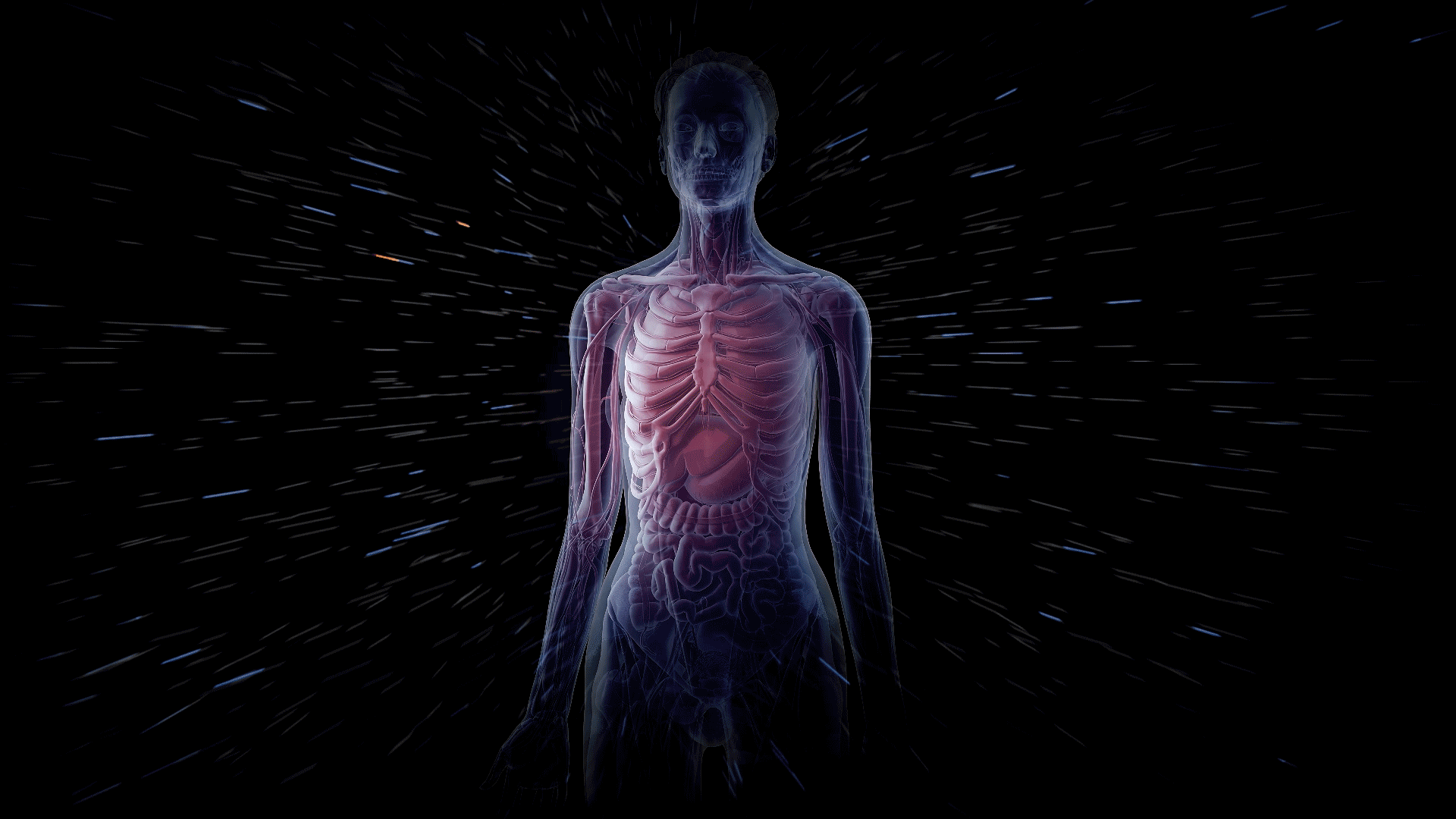
Space Radiation Miniseries
The Space Radiation Element (SRE) seeks to characterize human health outcomes associated with space radiation exposure, helping NASA to build strategies that protect astronaut health and ensure safe human spaceflight.
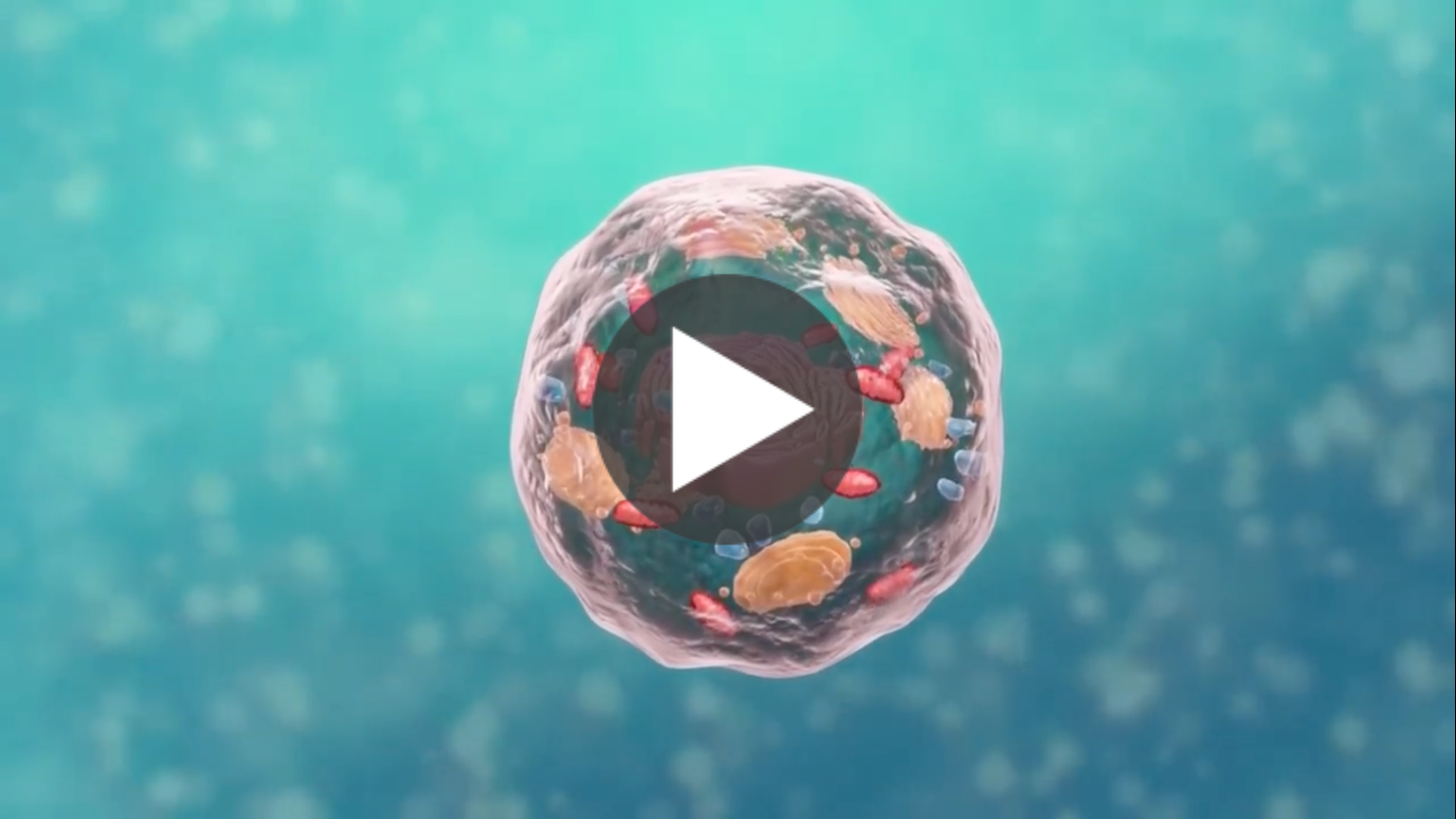
Real World: Small Systems Count - Cells in Space
Have you ever wondered what living in space would do to your body? In this Real World video, learn how NASA scientists study cells on Earth to learn how to protect astronauts from radiation during space flights. Dr. Egle Cekanaviciute describes changes in cells and cell organelles. She also compares quantitative and qualitative data and demonstrates how to calculate the percentage of mutated cells.
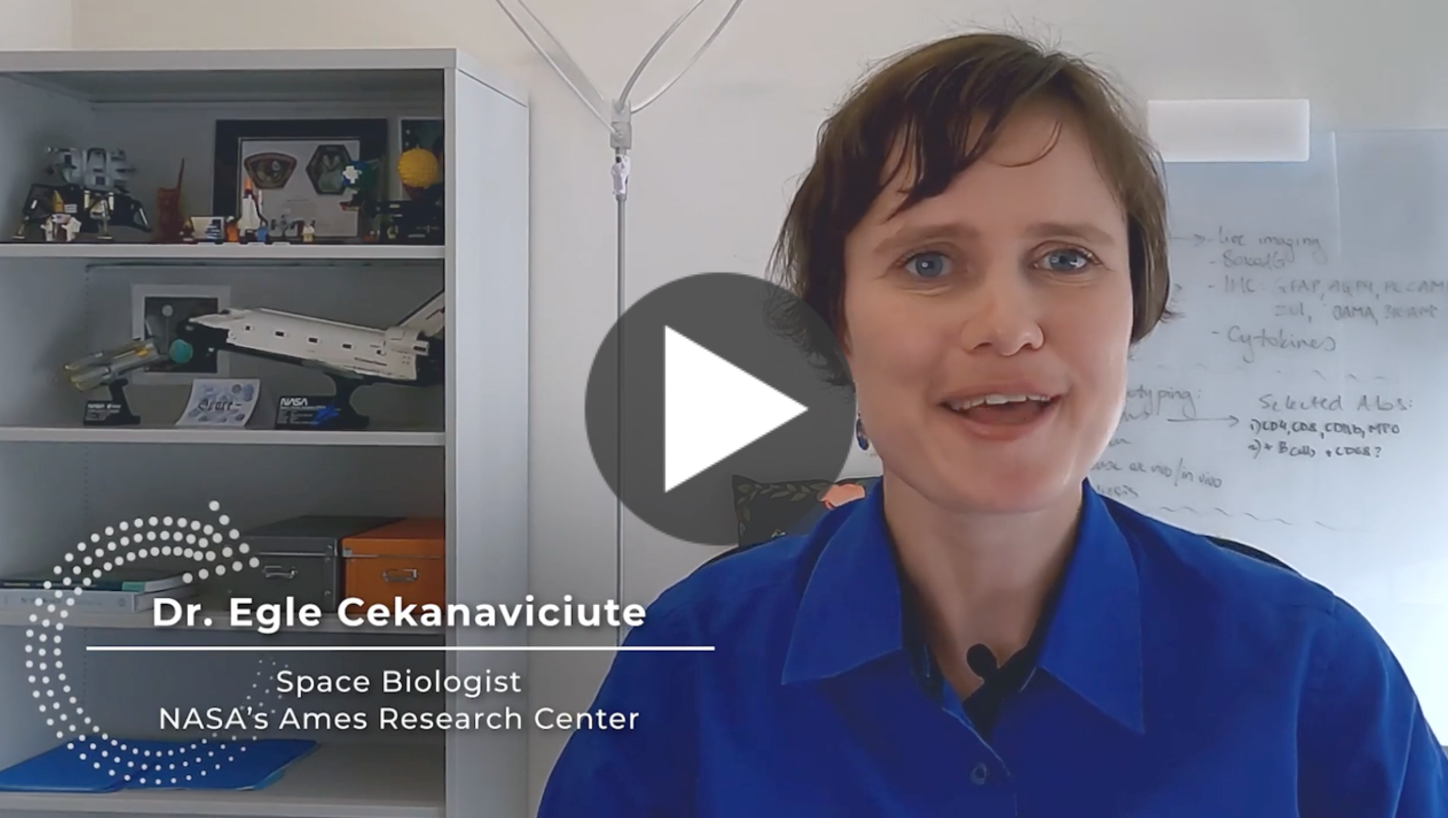
Space Biologist - Dr. Egle Cekanaviciute
In this close-up video, Dr. Egle Cekanaviciute, Space Biologist, shares how she studies radiation and its effect on human brain cells. Dr. Cekanaviciute stresses the importance of balancing work with other interests.
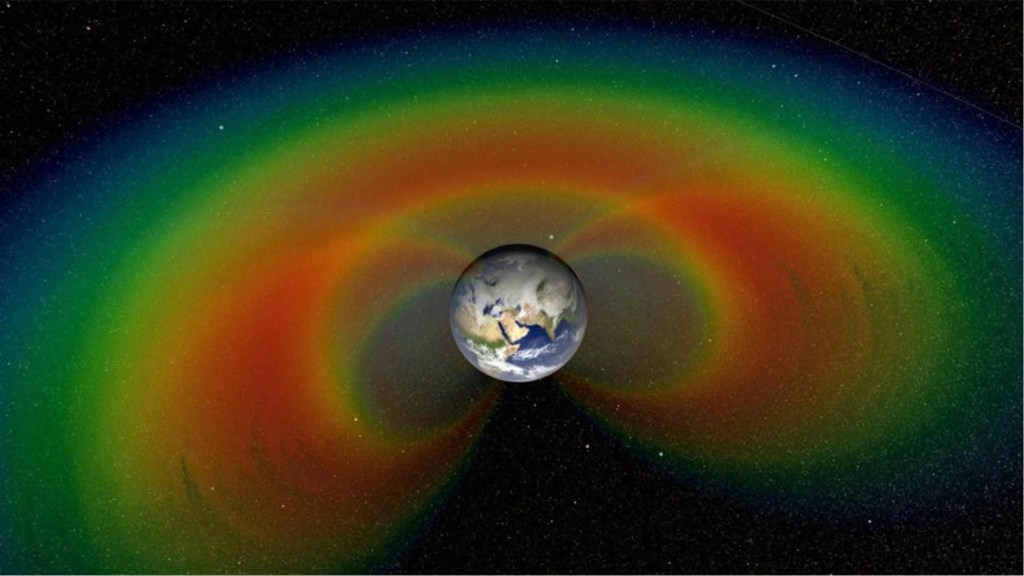
What are the Van Allen Belts and why do they matter?
The Van Allen Belts are two belts of radiation formed by high energy radiation particles. These shield the Earth from the solar storms and the constantly streaming solar wind that can damage technology as well as people.
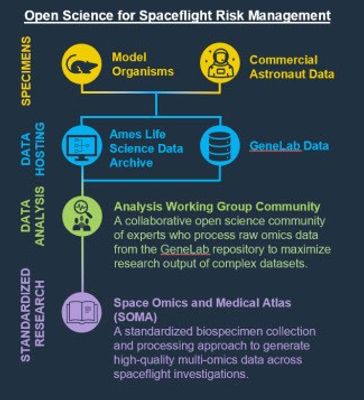
First Commercial Astronaut Bioscience Data
To develop astronaut health countermeasures, scientists study model organisms and, for the first time, open-access commercial astronaut data from the Inspiration4 mission, now hosted in ARC’s Open Science Data Repository.
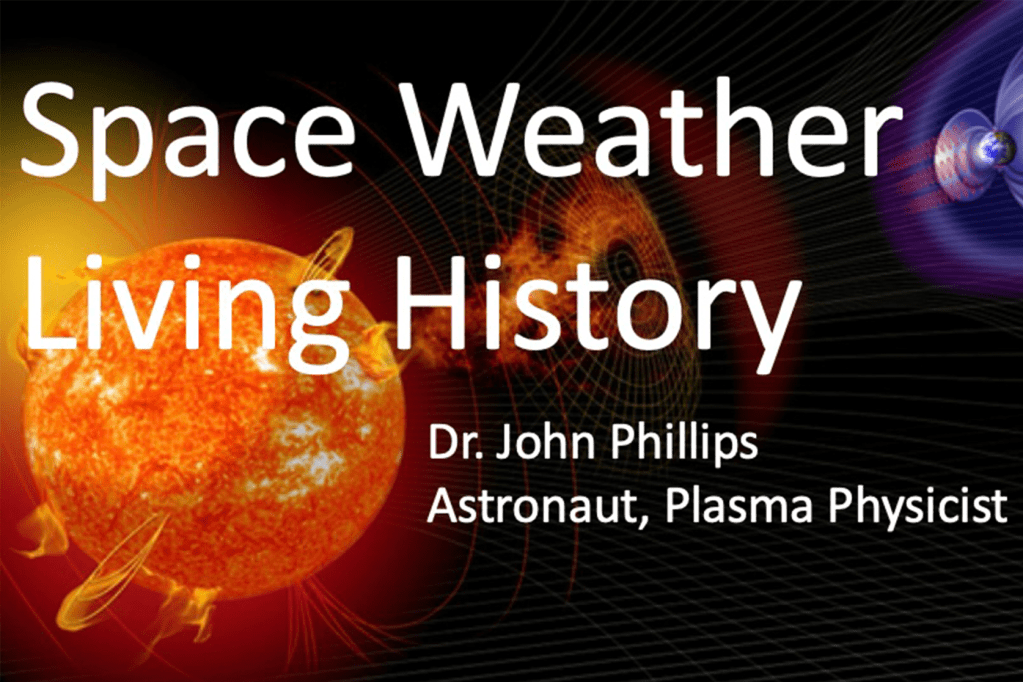
A plasma physicist turned astronaut experienced sunburn on the ISS when he opened the shutter for 4 seconds.
March Activities and Games
2025 NASA Science Calendar
Download our latest calendar and wallpaper backgrounds for your desktop or mobile device, and discover the fascinating science behind the images featured each month.
Download Options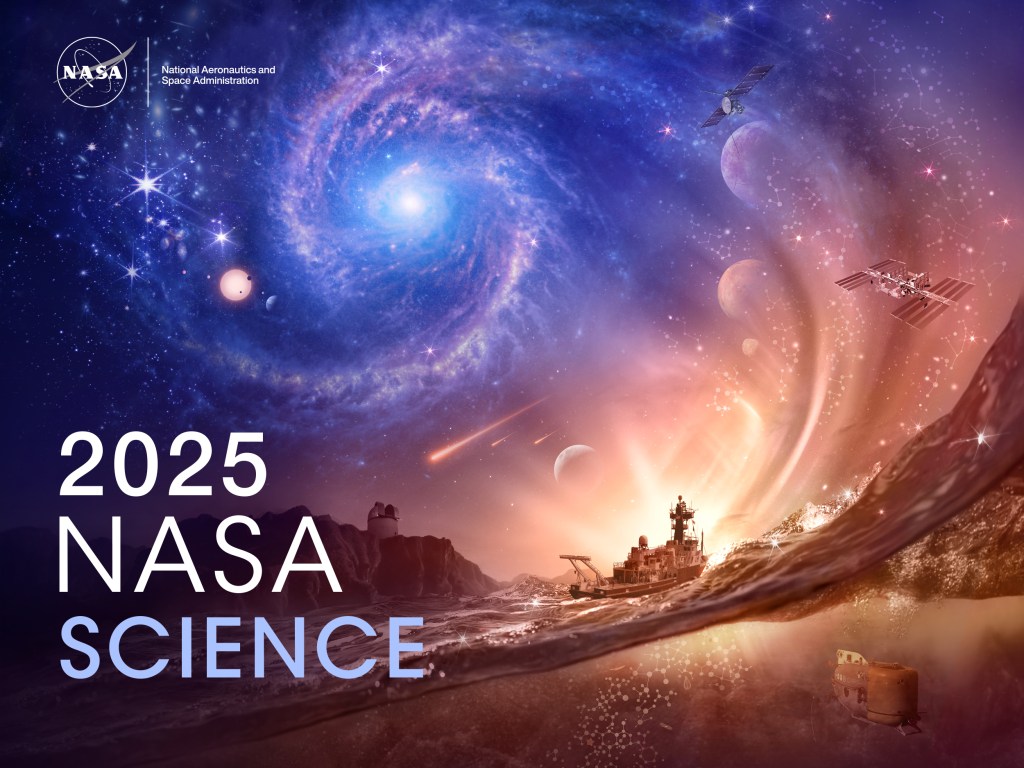
Explore our other featured images
Explore NASA's media galleries to view and download high-resolution images of the solar system, agency missions, and more.

